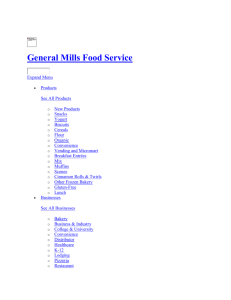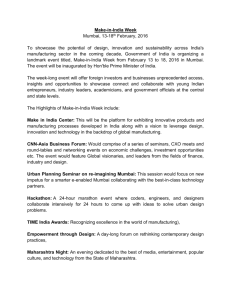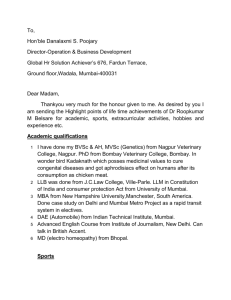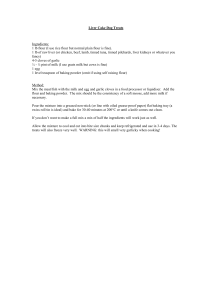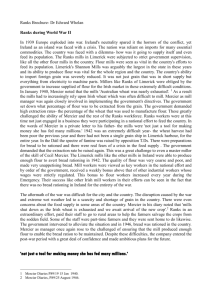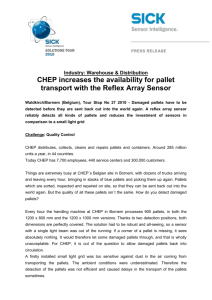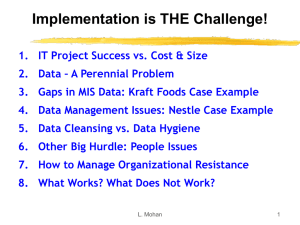Case Study No
advertisement
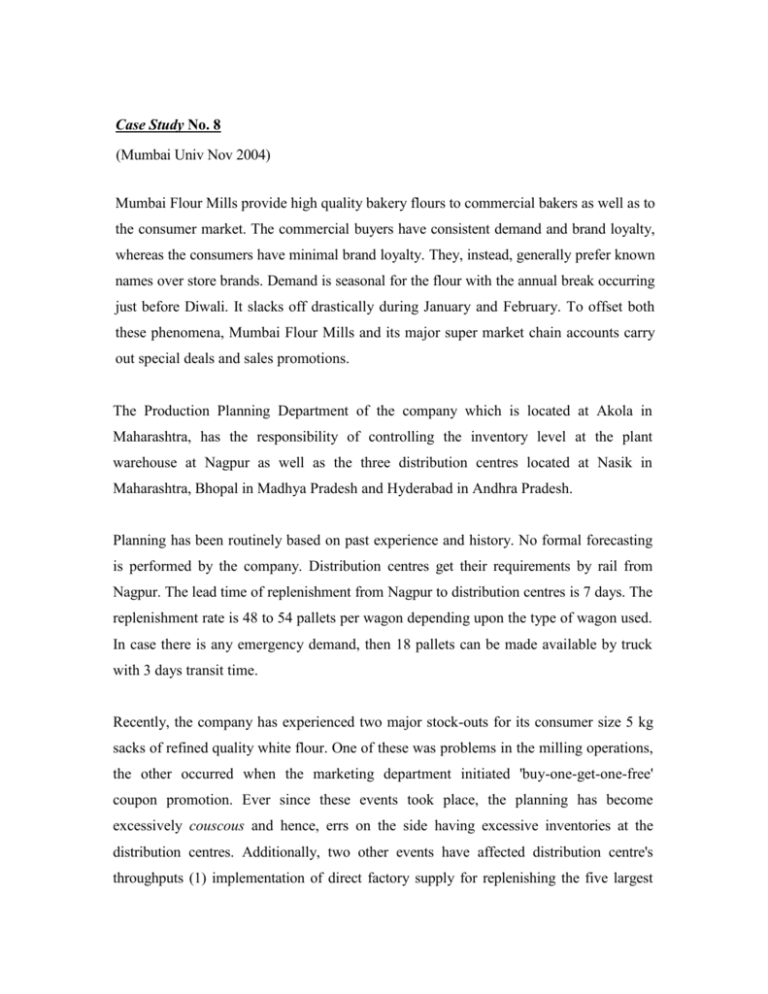
Case Study No. 8 (Mumbai Univ Nov 2004) Mumbai Flour Mills provide high quality bakery flours to commercial bakers as well as to the consumer market. The commercial buyers have consistent demand and brand loyalty, whereas the consumers have minimal brand loyalty. They, instead, generally prefer known names over store brands. Demand is seasonal for the flour with the annual break occurring just before Diwali. It slacks off drastically during January and February. To offset both these phenomena, Mumbai Flour Mills and its major super market chain accounts carry out special deals and sales promotions. The Production Planning Department of the company which is located at Akola in Maharashtra, has the responsibility of controlling the inventory level at the plant warehouse at Nagpur as well as the three distribution centres located at Nasik in Maharashtra, Bhopal in Madhya Pradesh and Hyderabad in Andhra Pradesh. Planning has been routinely based on past experience and history. No formal forecasting is performed by the company. Distribution centres get their requirements by rail from Nagpur. The lead time of replenishment from Nagpur to distribution centres is 7 days. The replenishment rate is 48 to 54 pallets per wagon depending upon the type of wagon used. In case there is any emergency demand, then 18 pallets can be made available by truck with 3 days transit time. Recently, the company has experienced two major stock-outs for its consumer size 5 kg sacks of refined quality white flour. One of these was problems in the milling operations, the other occurred when the marketing department initiated 'buy-one-get-one-free' coupon promotion. Ever since these events took place, the planning has become excessively couscous and hence, errs on the side having excessive inventories at the distribution centres. Additionally, two other events have affected distribution centre's throughputs (1) implementation of direct factory supply for replenishing the five largest super market chains and (2) a price increasing making the Mumbai Flour Mills more expensive than its national brand competitors such as Eillsburry, or Tata maida. Out of the 1,500 pallets in Hyderabad distribution centre, the Mumbai Hour Mills shows only 396 pallets for open orders. This has led the company to use outside overflow storage where there are another 480 pallets. Flour is easily damaged. Hence, the company prefers to minimize handling. Overstocking at the distribution centres alone costs Rs. 1.85 per pallet for outside storage to which must be added Rs. 4.25 per pallet extra handling charges and Rs. 225 oer truck load for transportation. Similar scenarios are seen at other distribution centres as well. Mr. Mohan, the distribution manager, is contemplating various approaches to solve the inventory problem. It is clear that the product must be in place at the time a consumer is making a decision to buy the product At the same time, the company cannot tolerate the overstocking situation and the stress that it is putting on facilities and cash flow. Mr. Mohan's first thought is "better information system", which will provide timely and accurate information throughout the organization. On the basis of the above case, answer the following questions: a) Evaluate the alternate solution which could possibly be considered by Mr. Mohan b) What additional solution, if any, do you propose in lieu of Mr. Mohan's solution? c) Critically examine the transportation system of the company. Enumerate its drawbacks.
